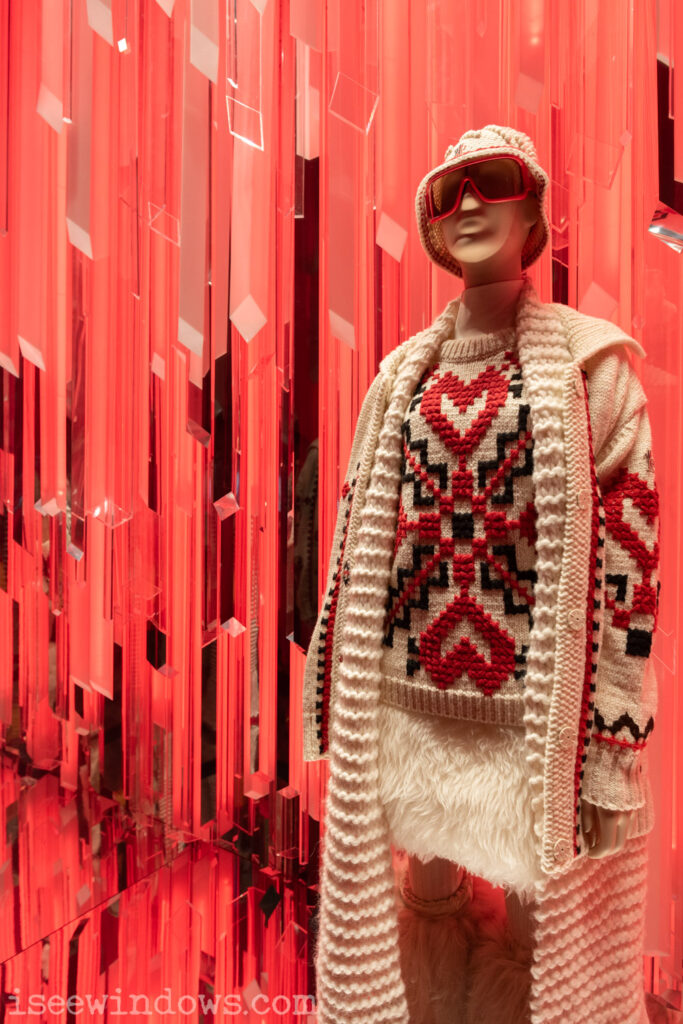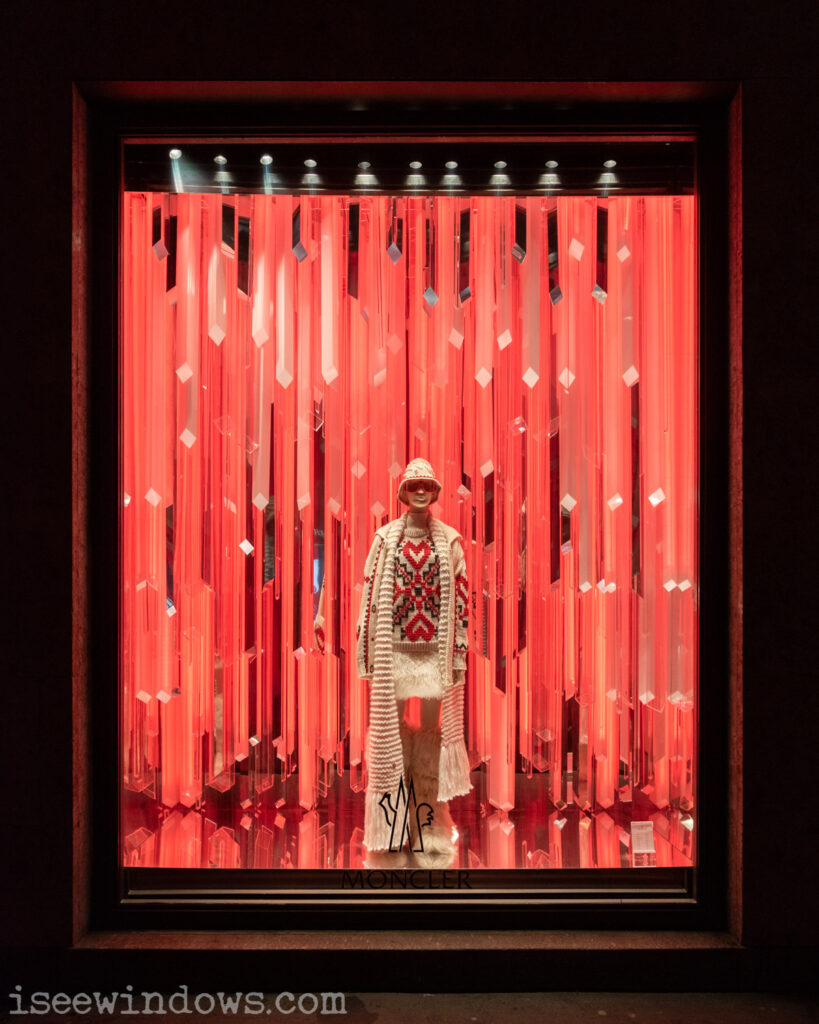
2025/01 Moncler Grenoble – FW24
Details:
Moncler Grenoble
Fall-Winter 2024
Via Monte Napoleone 1, Milan
Review:
by Peter Hamer
january 03, 2025
Moncler’s Grenoble window display is a refreshing example of how visual merchandising can merge sustainability with innovation. Launched in October 2024, this concept has already lived three distinct lives: a yellow version anticipating the City of Genius show in Shanghai, followed by a pristine white version, and now, a bold red iteration that aligns with the Moncler Grenoble collection showcased in February 2024 in St. Moritz. The red version feels alive—it commands attention and feels personal. Maybe it’s my love for red talking, but isn’t it wonderful when a display resonates emotionally while serving its purpose?
Moncler’s approach to window displays isn’t about constant reinvention. Instead, the brand focuses on two main creative concepts each year—one for winter and one for summer. This practical strategy acknowledges that customers don’t visit stores often enough to notice a constant stream of new concepts. However, Moncler maintains variety with approximately twelve product rotations annually, refreshing display elements to keep things dynamic. The frequency of these rotations depends on the store type; for a flagship location like Via Monte Napoleone, it’s once a month. This thoughtful balance between consistency and novelty helps avoid the trap of overconsumption—a persistent challenge in retail visual merchandising.
This window strategy also aligns with the Ellen MacArthur Foundation’s Butterfly Diagram, specifically within the technical cycle. The principle? Extend the lifecycle of materials and products. By prolonging the life of their displays, Moncler reduces waste and maximizes resources. But here’s where it gets exciting: instead of relying solely on modular physical elements, Moncler integrates LED lighting to adapt the displays. Changing the display’s colors with lighting enhances its versatility, allowing it to stay fresh and relevant without requiring frequent physical changes. This isn’t just sustainability; it’s an elegant take on modularity that leverages technology to do more with less.
What about the materials? Moncler’s commitment to sustainability is evident in their thoughtful approach to material choices for window displays. While specific certifications are not mentioned, the brand prioritizes sustainable practices by selecting materials that are recyclable or have a reduced environmental impact. This approach reflects Moncler’s broader dedication to integrating sustainability across their retail and product strategies. But it also raises important questions: does the design process prioritize creating an extendable display from the start, or does modularity emerge as a post-design solution? Similarly, does sustainability drive the material selection from the outset, or is it a refinement added later? These are the nuanced decisions that define whether sustainability is truly embedded in a brand’s DNA.
During the same period, Moncler’s collaboration with Palm Angels offers a compelling comparison. The Palm Angels store features an LED palm tree concept that has remained since May 2024, refreshed through changes in lighting color. This shared approach highlights a mutual commitment to sustainability, but it also reveals differences in execution. While the Palm Angels concept is reflective of its brand identity, it risks overshadowing the products themselves. Moncler, in contrast, strikes a thoughtful balance, using its display to complement the products without becoming the main act.
So? Moncler’s Grenoble window display is more than just a beautiful storefront—it’s a demonstration of how sustainability can be seamlessly integrated into retail strategies. From its use of technology to extend the lifecycle of its displays to its commitment to recycled materials, Moncler sets a standard that is innovative, thoughtful, and impactful. For the retail industry, this isn’t just a display—it’s a lesson in how to do things right and maybe, find a cure for the retail virus that has been going around for a bit too long now.



